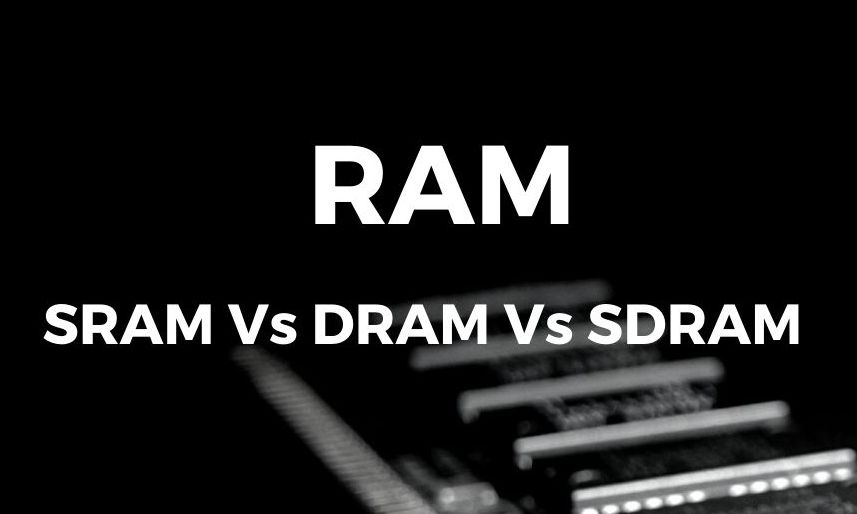Both DRAM (Dynamic RAM) and S-RAM (Static RAM) are types of Random Access Memory (RAM) & SD-RAM stands for Synchronous Dynamic Random Access Memory. So, here in the article we have provided all the details for DRAM Vs SRAM Vs SDRAM Types.
RAM is a semiconductor device internal to the integrated chip that stores the processor that a micro-controller or other processor will use constantly to store variables used in operations while performing calculations. RAM refers to the hardware that provides the memory locations referred to in software as registers. All RAMs are volatile, it means that everything in volatile memory is lost when the power is off. You can consider RAM as a working memory where variables are stored, when the CPU performs calculations. RAM is much faster to access & it is a critical component to the speed of the processor chip.
The architectural difference between the two is that DRAM uses transistors and capacitors in an array of repeating circuits (where each circuit is one bit), whereas S-RAM uses several transistors in a circuit to form one bit.
DRAM
While talking about DRAM, it stores data by “writing a charge to the capacitor, by way of an access transistor”. It was invented by Robert Dennard at IBM, patented in 1967. DRAM looks at the state of charge in a transistor-capacitor circuit (see Figure 1) a charged state is a 1 bit, while the low charge state is a 0 bit.

Several of these capacitor-transistor circuits together creates a “word” of memory. It is in the below figure.
DRAM uses capacitors that lose charge over time due to leakage, even if the supply voltage is maintained properly. Here, The charge on a capacitor decays when a voltage is removed from it. D-RAM must be supplied with a voltage to retain memory (and is thus volatile). Capacitors can lose their charge a bit even when supplied with voltage if they have devices nearby (like transistors) that draw a little current even if they are in an “off” state; this is capacitor leakage. Due to capacitor leakage, DRAM needs to be refreshed often or else it can lose the data.
SRAM
SRAM does not use capacitors. Here, SRAM uses several transistors in a cross-coupled flip-flop configuration to avoid the leakage issue and does not need to be refreshed.

SDRAM
In SDRAM, SD-RAM stands for Synchronous Dynamic Random Access Memory. It is a type of DRAM that is synchronize with the processor system bus for a speed advantage.
The SDRAM can transmit data both at the rising and the falling edges of the square wave signal (Hence the name synchronous).
Summary of DRAM Vs SRAM Vs SDRAM
DRAM:
- D-RAM stands for dynamic random access memory.
- DRAM takes 1 transistor and 1 capacitor to store 1 bit, But we have to periodically refresh data stored in DRAM.
- The cost of DRAM is lower than SRAM.
SRAM:
- S-RAM stands for static random access memory.
- S-RAM takes 6 transistors to store 1 bit.
- SRAM retains data as an supply is available.
- S-RAM is more faster than DRAM. That’s the reason SRAM is used in cache memory, but the cost of SRAM is high.
SDRAM:
- SD-RAM stands for synchronous dynamic random access memory.
- SDRAM is synchronize with system bus.
Related links :
How to Choose the Right Gaming Mouse ?
RAM Guide for Best Gaming RAM – 2020 Buyer Guide
Best Budget Gaming Mouse under 1500 Rs.



